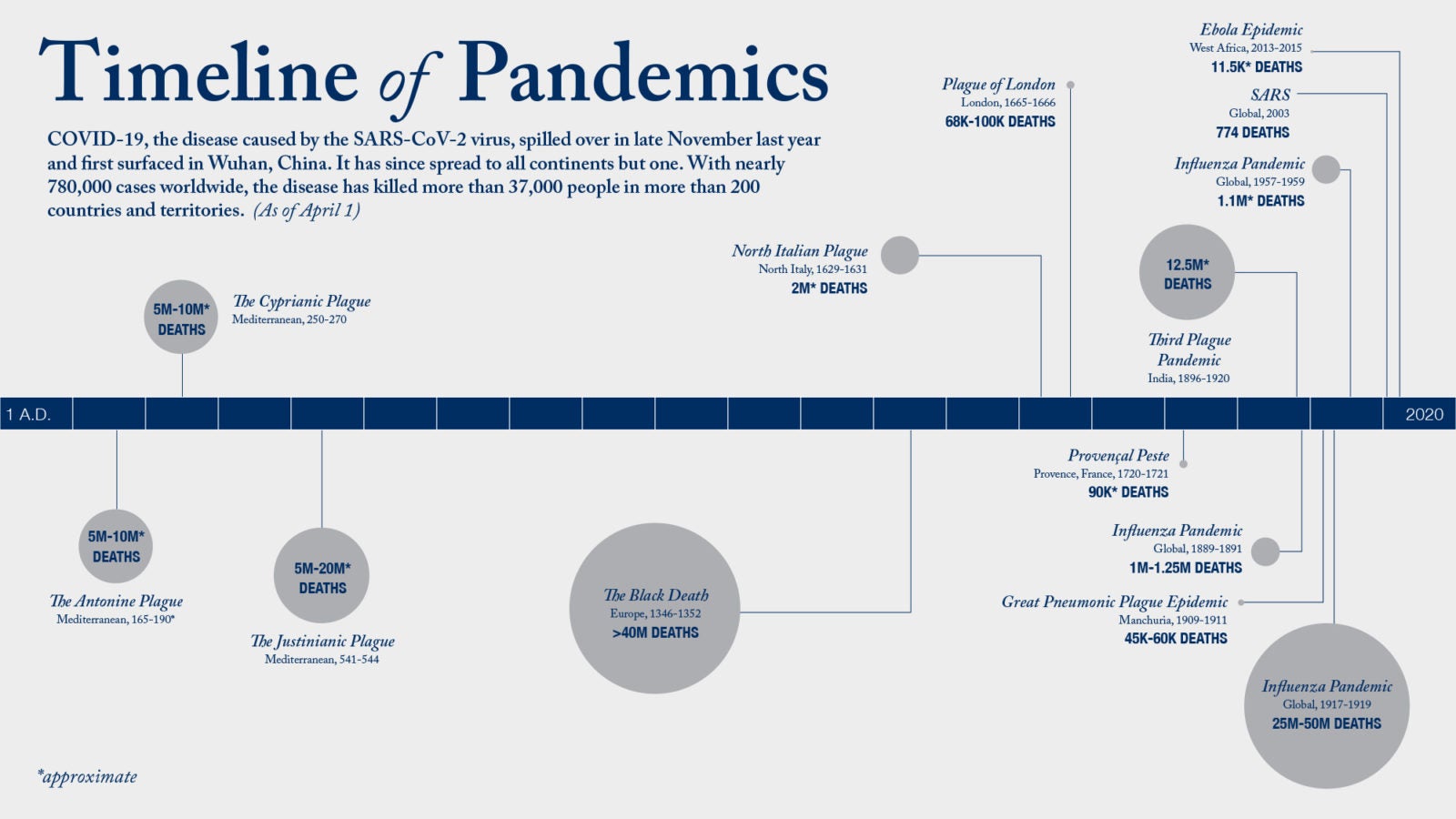‘Up in the Air’
More often, it is a challenge to solidly pinpoint a country or region of origin for pandemic outbreaks, Newfield says.
“The origin of the Black Death is believed to be somewhere in Eastern Central Asia, but that’s not necessarily the proximate origin,” he says “The proximate origin could have been much closer to Europe.”
He says the same goes for the Justinianic Plague, an earlier pandemic of plague that reoccurred between 541 and 750 C.E. and for the origin for smallpox. Both could have emerged much closer to Europe than has long been thought.
“It’s still up in the air,” he says.
While the origins of major infectious diseases are murky, Newfield stresses that a good deal is known about the emergence of COVID-19.
Disease Emergence Rising
The scholar also notes that most estimates show there has been at least one novel emergent pathogen per year over the last three decades.
“The rate of disease emergence seems to be increasing in line with population growth, expanding agriculture and food production, environmental modification and climate change,” says Newfield, also an environmental historian.
To better understand the threat of disease spillovers and the impact of pandemics, interdisciplinary research is crucial, he adds.
Last year, Newfield and a team of international researchers from a wide range of fields analyzed datasets linked to the Justinianic Plague, which was widely thought to have killed tens of millions of people in the Mediterranean in the matter of a few years.
Their interdisciplinary approach called that thinking into question.
“Most infectious disease scholars rely solely on the types of evidence they are trained to use,” the academic says. “It’s going to take scientists, physicians, historians and more to study the occurrences of past and more recent outbreaks. To figure them out, we must all work together.”

 “We need sober epidemiology in order to get through this,” says Newfield, assistant professor of history and biology at Georgetown. “There’s been much media attention on the deaths that are occurring from the virus and even comparisons to the 1917 to 1919 influenza outbreak. There just really are no comparisons when you consider the scale of the two pandemics and look at the actual populations impacted.”
“We need sober epidemiology in order to get through this,” says Newfield, assistant professor of history and biology at Georgetown. “There’s been much media attention on the deaths that are occurring from the virus and even comparisons to the 1917 to 1919 influenza outbreak. There just really are no comparisons when you consider the scale of the two pandemics and look at the actual populations impacted.”
